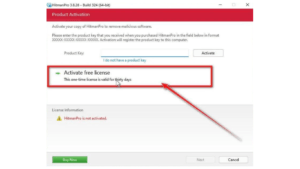Enable Sound Equalization on Windows 11: 10 Method
Introduction
The optimal audio experience is crucial for any Windows 11 user. Whether you’re an audiophile, a casual listener, or a professional sound editor, the ability to enable sound equalization on your system can significantly enhance your listening experience. This step-by-step guide aims to walk you through ten effective methods to unlock the full potential of your audio settings, ensuring a balanced and rich sound output. By enabling sound equalization, you can adjust frequencies to suit your listening preferences, improve sound quality for various applications, and achieve the perfect audio environment for any scenario. Let’s dive in and explore how to elevate your audio experience on Windows 11.
10 Methods to Enable Sound in Windows 11
1. Using Windows Settings

The simplest way to enable sound equalization is through Windows Settings. Navigate to ‘System’ > ‘Sound’, select your output device, and click on ‘Properties’. Look for the ‘Enhancements’ tab, where you’ll find the ‘Equalizer’. From there, you can customize the sound profiles to your liking.
2. Via Control Panel

For a more detailed approach, the Control Panel offers advanced sound settings. Go to ‘Hardware and Sound’ > ‘Sound’, and in the playback tab, right-click your default device and select ‘Properties’. Under ‘Enhancements’, you can access and adjust the equalizer settings.
3. Third-party Audio Drivers

Many external sound cards and some integrated ones come with their own audio drivers and control panels (such as Realtek HD Audio Manager or Dolby Atmos). These often include more sophisticated equalization options than Windows provides by default. Installing and using these can offer a significant upgrade to your audio equalization capabilities.
4. Sound Equalization Software

There’s a variety of third-party sound equalization software available that can provide extensive control over your audio output. Programs like Equalizer APO, combined with a graphical interface like Peace GUI, allow for detailed frequency adjustments across a wide spectrum.
5. Enhancements in Streaming Applications

If you’re looking to enable sound equalization for specific applications like Spotify or VLC media player, many of these programs come with their built-in equalizers. Accessing the settings within these apps can let you adjust sound preferences directly for a tailored listening experience.
6. Gaming Software

For gamers, many gaming headsets and associated software come with customized audio equalization settings designed to enhance the gaming experience. Software like Razer Synapse or Logitech G Hub provides gamers with the ability to tweak audio settings for an immersive sound environment.
7. Configuring Speaker Properties

For those with multiple speaker setups, Windows allows you to configure speaker properties to achieve optimal sound distribution and quality. Through the ‘Sound’ settings in the Control Panel, you can access ‘Speaker Setup’ and adjust the configuration to match your system.
8. Utilizing Audio Enhancements

Windows 11 includes various audio enhancements that can improve your listening experience. Features like ‘Loudness Equalization’ can be enabled through the ‘Sound’ settings, balancing volume levels across different applications and media types.
9. Advanced Software Configurations
Advanced users can delve into software configurations like the Windows Registry or Local Group Policy Editor to tweak system-wide audio settings. However, this approach requires caution and a good understanding of system settings to avoid potential issues.
10. Hardware Solutions

Finally, for the ultimate control over sound equalization, considering hardware solutions like external DACs (Digital-to-Analog Converters) or sound processors can provide superior audio quality and customization options compared to software solutions alone.
Importance
Enable sound equalization on Windows 11 opens up a world of auditory enhancement, allowing you to fine-tune your audio experience to perfection. Whether through built-in Windows settings, third-party software, or advanced hardware, the methods outlined in this guide provide a comprehensive approach to achieving the best sound quality for your needs. By exploring these options, users can significantly improve their listening experience, tailoring it to suit their preferences and requirements. Remember, the key to a perfect audio setup lies in experimentation and personalization, so don’t hesitate to try out different methods to discover what works best for you. Enjoy the journey to superior sound on Windows 11!
FAQ:
How do I enable loudness equalization in Windows 11?
Right-click the sound icon on the taskbar, select ‘Sound settings’, then ‘More sound settings’. In your default device properties under ‘Enhancements’, check ‘Loudness Equalization’ and apply.
Does Windows 11 have a volume equalizer?
Yes, Windows 11 has a volume equalizer, accessible through ‘Sound settings’ in the system settings or your audio device’s specific software, depending on the hardware.
How do I turn on sound equalization?
Right-click the sound icon, go to ‘Open Sound settings’ > ‘Sound Control Panel’. Select your device, click ‘Properties’, and enable equalization under ‘Enhancements’.
How do I turn on sound equalization in Windows 11 MW2?
the ‘Sound Control Panel’ via system settings, choose your playback device, and in ‘Properties’ under ‘Enhancements’, enable and adjust the equalizer for MW2.
